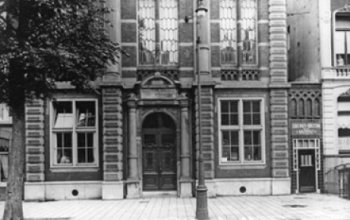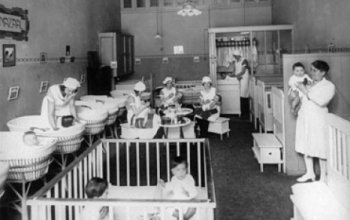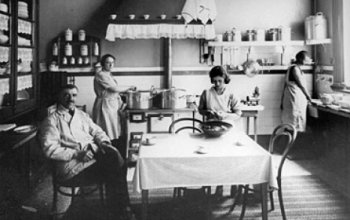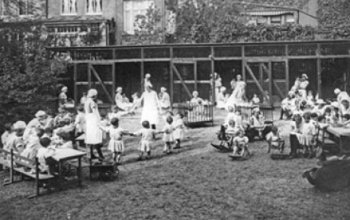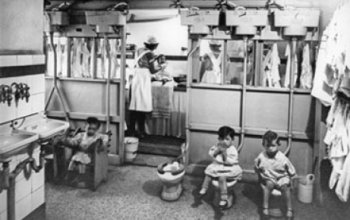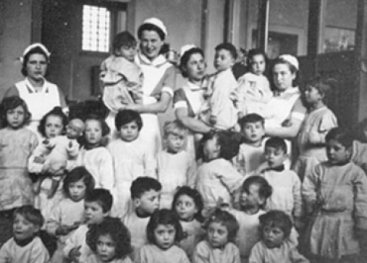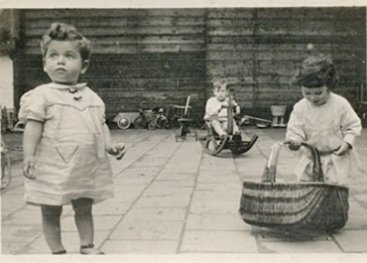
The Hollandsche Schouwburg
Theatre
The Hollandsche Schouwburg in Amsterdam was an ordinary theatre before the war. From 1942 onward, it was used as the main assembly point for Jews and, in fact, a kind of prison. After a short stay at the former theatre, the assembled Jews were put on transports for deportation to the camps.
‘I knew the area around the Hollandsche Schouwburg, the former theatre. I used to play there all the time, near the Artis Zoo and the Wertheimplantsoen. But my mother wouldn’t let me go there anymore. Terrible things happened around there that I was not allowed to see. It was out-of-bounds territory. And then I was taken right there together with my sister.’
Levi Hagenaar
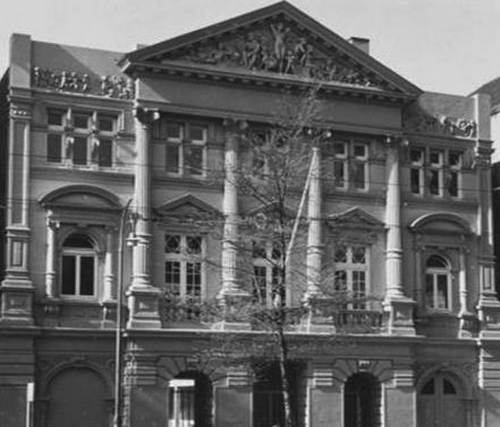
Children
The Schouwburg was very cramped. The Jewish prisoners were packed together in the large performance hall, and on the stairs and on the balconies. This is why children up to the age of 13 were taken to a day care centre across the street. Their parents remained in the Schouwburg. When a family were put on a transport, the children were taken from the day care centre to join their parents for deportation.
Jewish Council
The Jewish Council (Joodse Raad) played a major role in the Hollandsche Schouwburg. The Council comprised Jews who handle all types of matters for the Nazis. They had to register who arrived at the Schouwburg and who left. Some Council workers took every opportunity they could to save people, adults and children alike. They made sure that their names disappeared from the records.
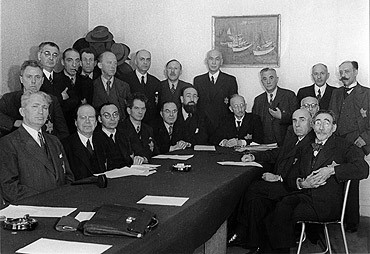
Inside the Hollandsche Schouwburg, the former theatre, conditions were cramped and chaotic. Everybody feared the transports. And it would be everybody’s fate at some point. The courtyard was somewhere people could get a little fresh air.
‘There was complete panic in the Schouwburg. It was very full, and people were crying and screaming. My uncle, a giant of a man, went completely crazy. I could smell people’s cold sweat in the Schouwburg. They kept calling on us to register via an intercom system. I walked around lost; did I have to register somewhere, too?’
Michael Klein
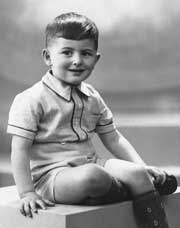 ‘I have strong memories of the Hollandsche Schouwburg. I saw my father and mother. They were on the stage and I wanted to go to them. They saw me too. Then I was taken away by a nurse. She got some man to help her pull me away. I had to go with her across the street, into another building. I didn’t understand what was going on.’
‘I have strong memories of the Hollandsche Schouwburg. I saw my father and mother. They were on the stage and I wanted to go to them. They saw me too. Then I was taken away by a nurse. She got some man to help her pull me away. I had to go with her across the street, into another building. I didn’t understand what was going on.’
Salo Muller
